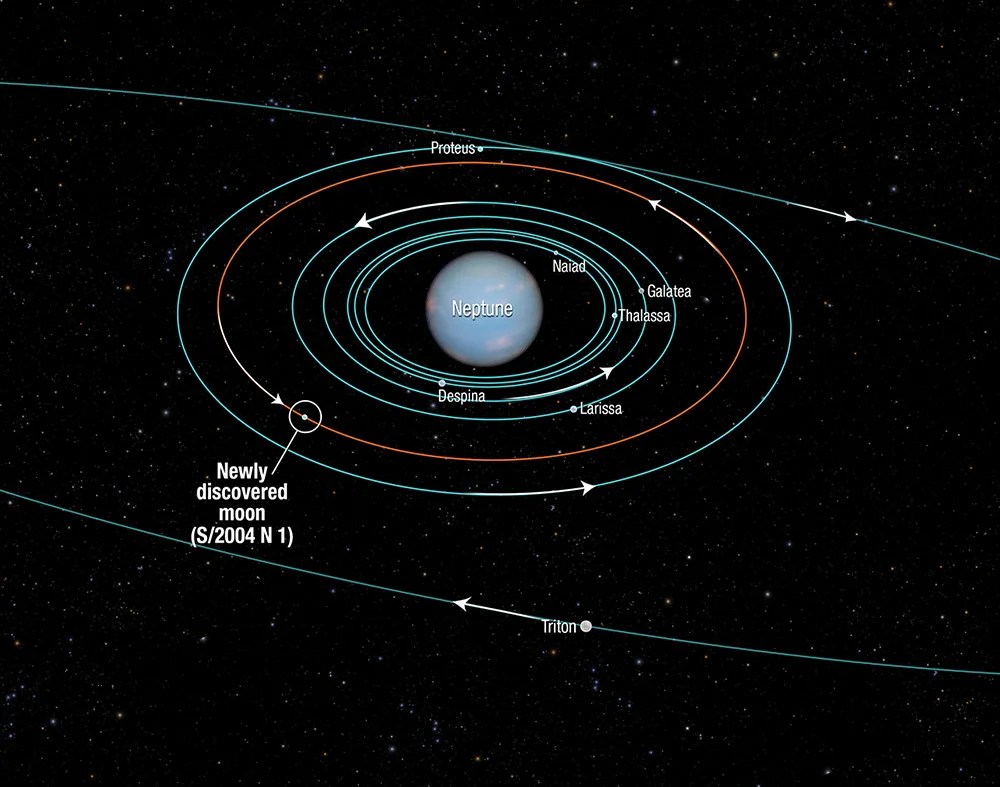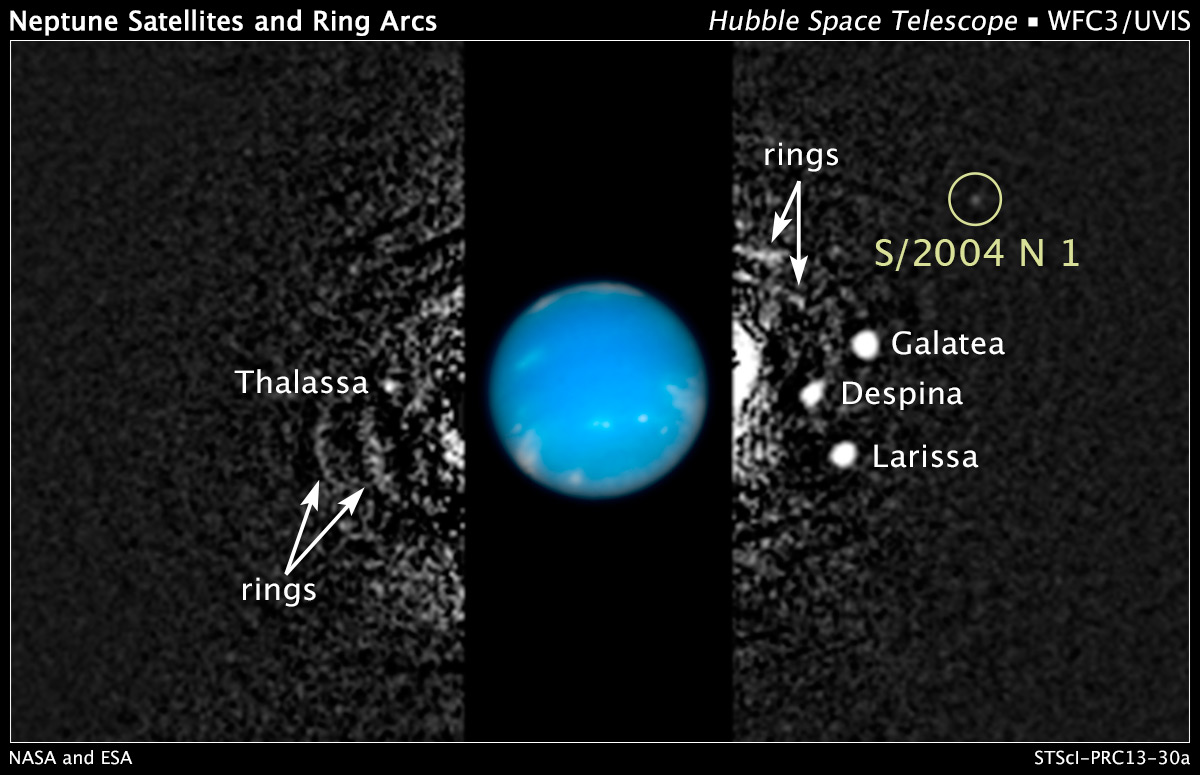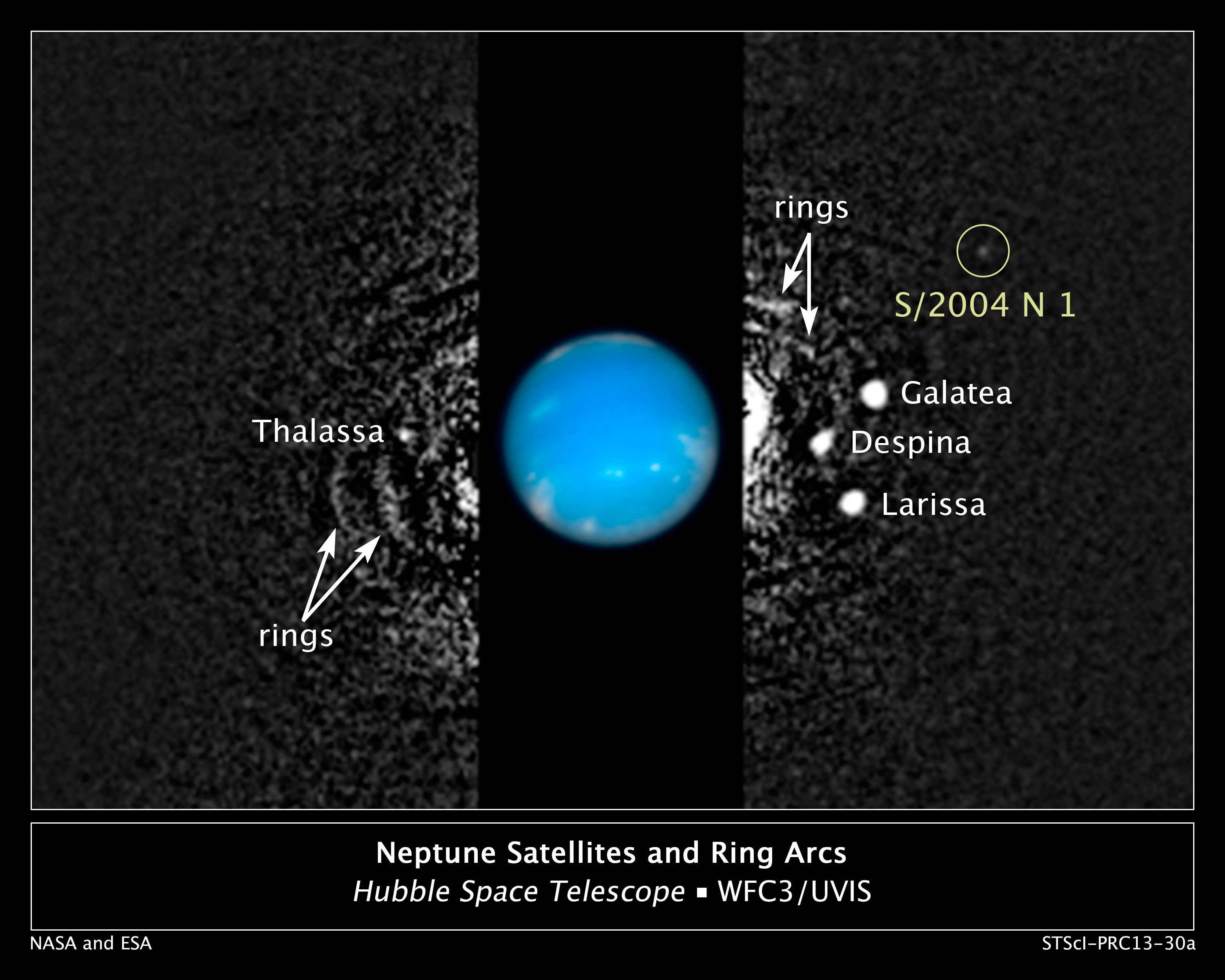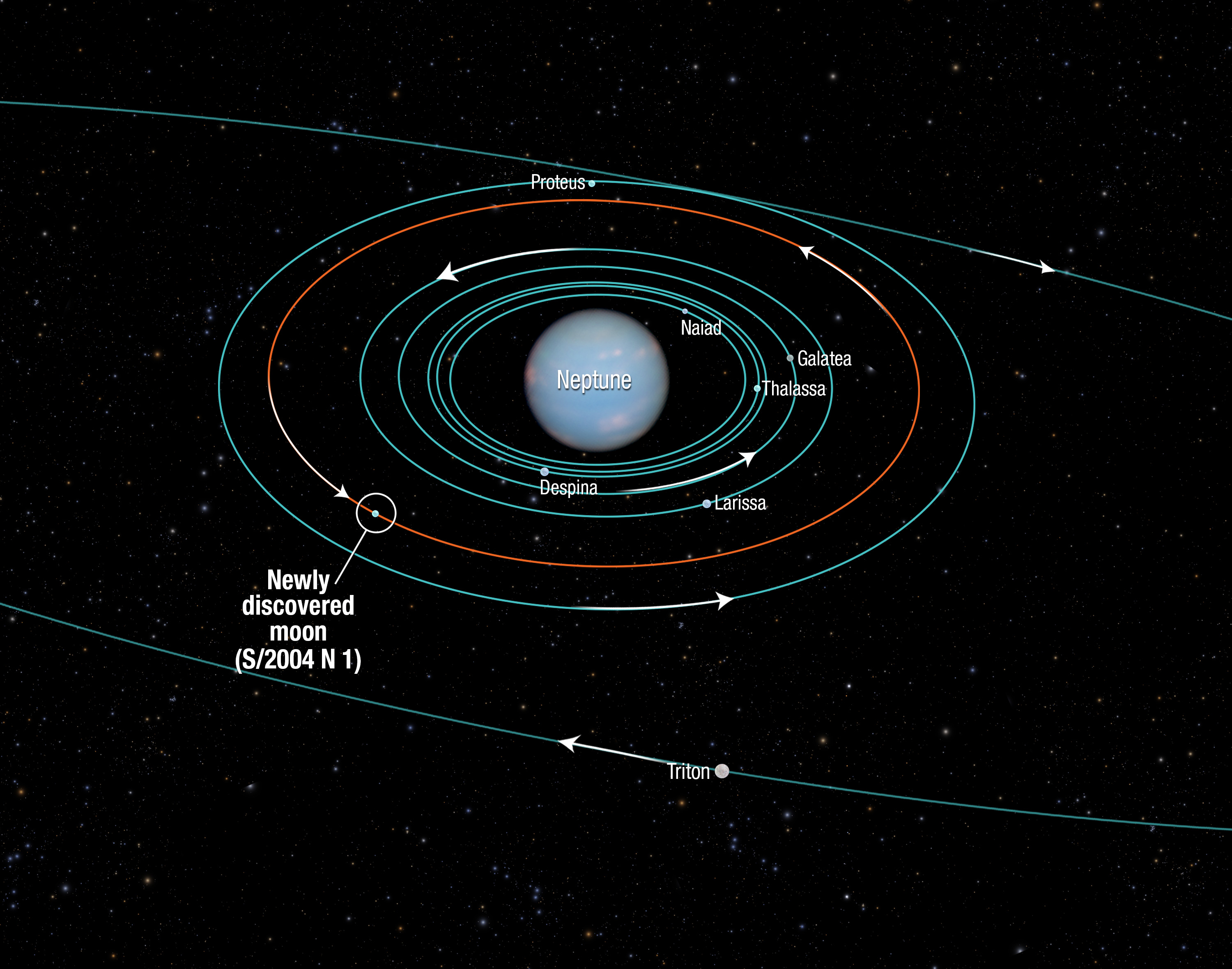Neptune’s Moon Hippocamp
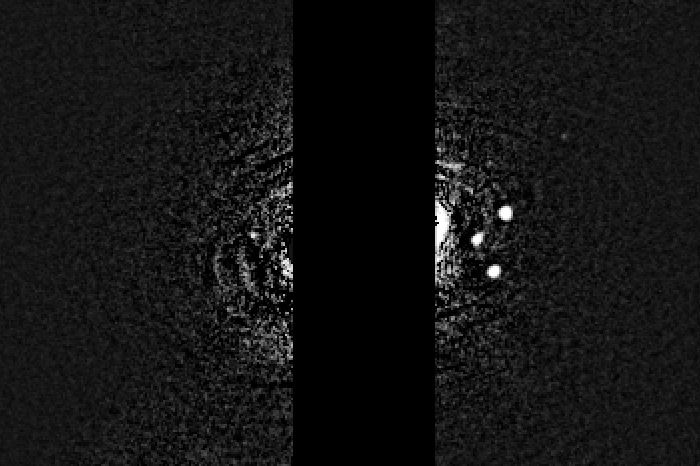
| Credit | NASA, ESA, and M. Showalter (SETI Institute) |
|---|---|
| Language |
|
This composite Hubble Space Telescope picture shows the location of tiny Hippocamp (originally designated S/2004 N 1), a moon orbiting the giant planet Neptune, nearly 3 billion miles from Earth.
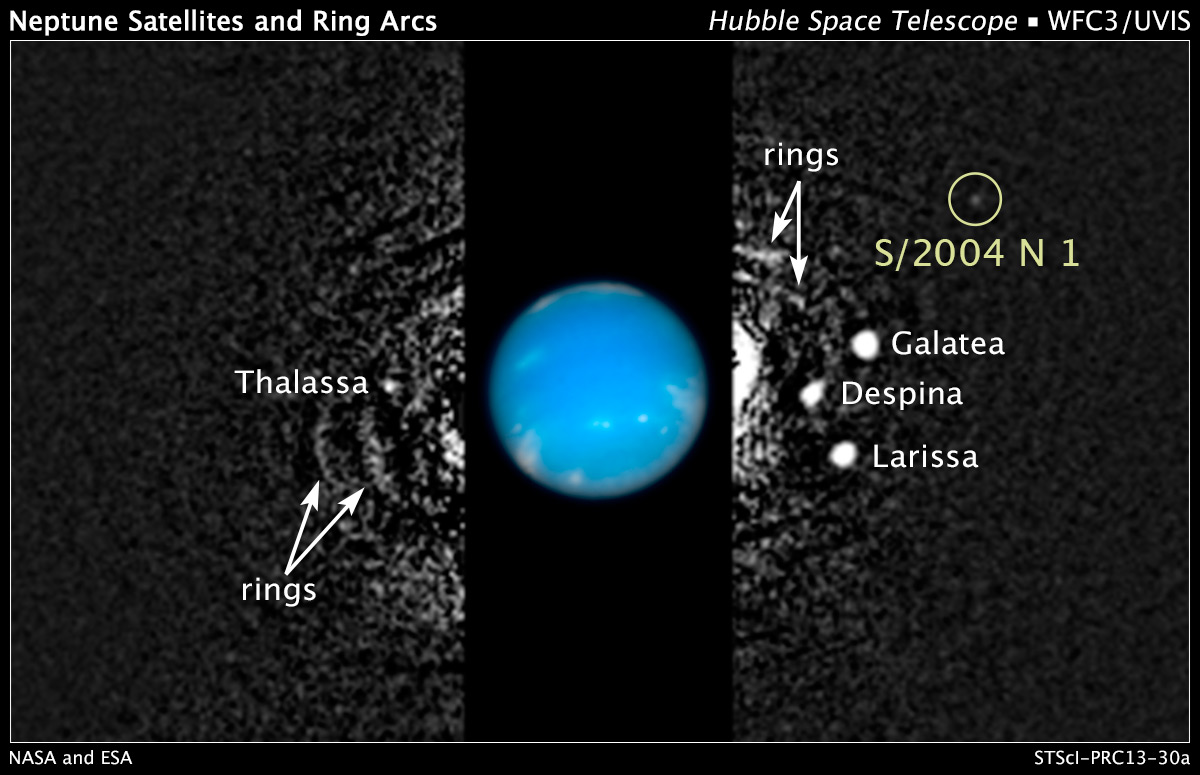
The moon is so small (no more than 12 miles across) and dim, it was missed by NASA's Voyager 2 spacecraft cameras when the probe flew by Neptune in 1989. Several other moons that were discovered by Voyager appear in this 2009 image, along with a circumplanetary structure known as ring arcs.
Mark Showalter of the SETI Institute discovered Hippocamp in July 2013. He analyzed over 150 archival Neptune photographs taken by Hubble from 2004 to 2009. The same white dot appeared over and over again. He then plotted a circular orbit for the moon, which completes one revolution around Neptune every 23 hours.
The black-and-white image was taken in 2009 with Hubble's Wide Field Camera 3 in visible light. Hubble took the color inset of Neptune on August 19, 2009.
